Just over 100km from Hanoi, Nam Dinh appears as a charming hidden gem, ready to welcome travelers who are passionate about exploring. This place not only stands out with its pristine beaches and peaceful natural scenery but also fascinates with its ancient cultural and historical relics. Join 63Stravel.com to explore 15+ historical sites in Nam Dinh for your upcoming trip!
Explore 15+ famous historical relics in Nam Dinh, don't miss them
Below are the top 15+ famous historical sites in Nam Dinh for you to have the most interesting and memorable discovery trip. Let's refer and save it when planning to come to Nam DInh!
Nam Dinh Old Quarter
Nam Dinh Old Town (also known as Thanh Nam Old Town) is located next to the banks of the ancient Vi Hoang River, now Nam Dinh River or Dao River. This old town has existed for more than 800 years with 40 small streets with rustic names such as Hang Mam, Hang Seo... Coming to Nam Dinh old town, you will admire ancient houses with traditional architectural features. fusion between Vietnamese architecture, Western architecture and Chinese architecture.
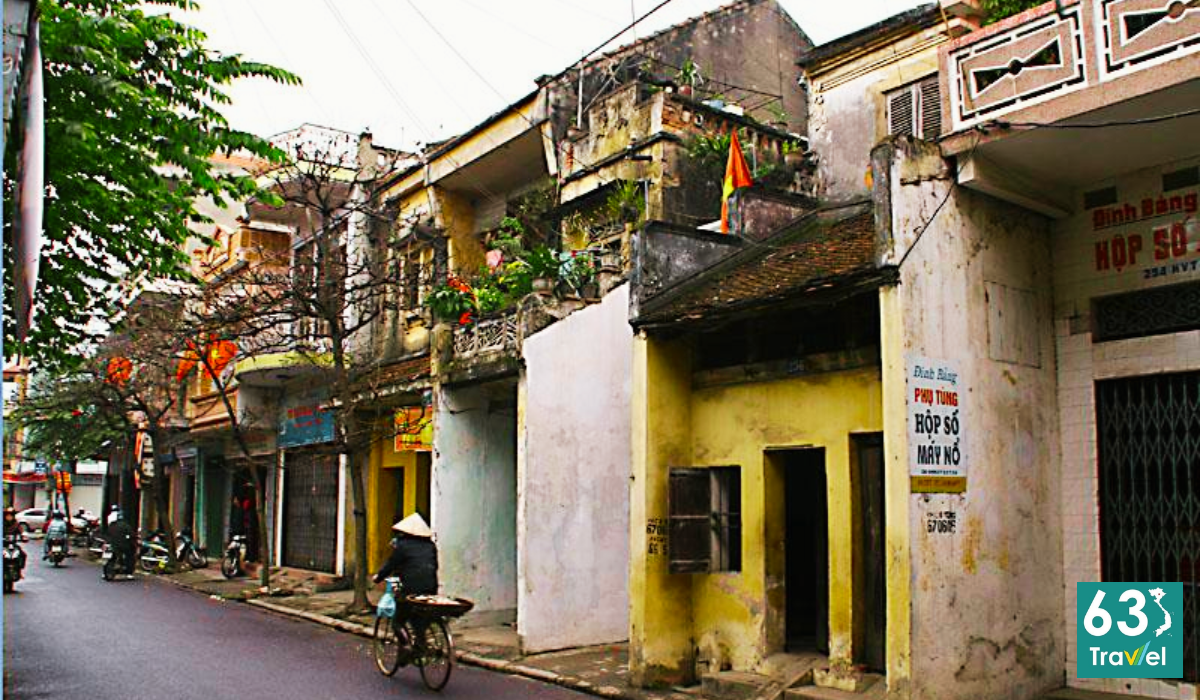
Immerse yourself in Nam Dinh ancient town and discover old values
The old town still retains its inherent tranquility in the past, despite experiencing many ups and downs in history. Like Hanoi Old Quarter, Nam Dinh Old Quarter helps you visualize and feel the social and cultural life of Nam Dinh people hundreds of years ago.
Pho Minh Tower Pagoda
Pho Minh Tower, one of the oldest towers in Vietnam, was built in 1305 in Loc Vuong commune, Nam Dinh province, about 5km from the city center. This impressive tower consists of 14 floors, with a height of up to 20m.
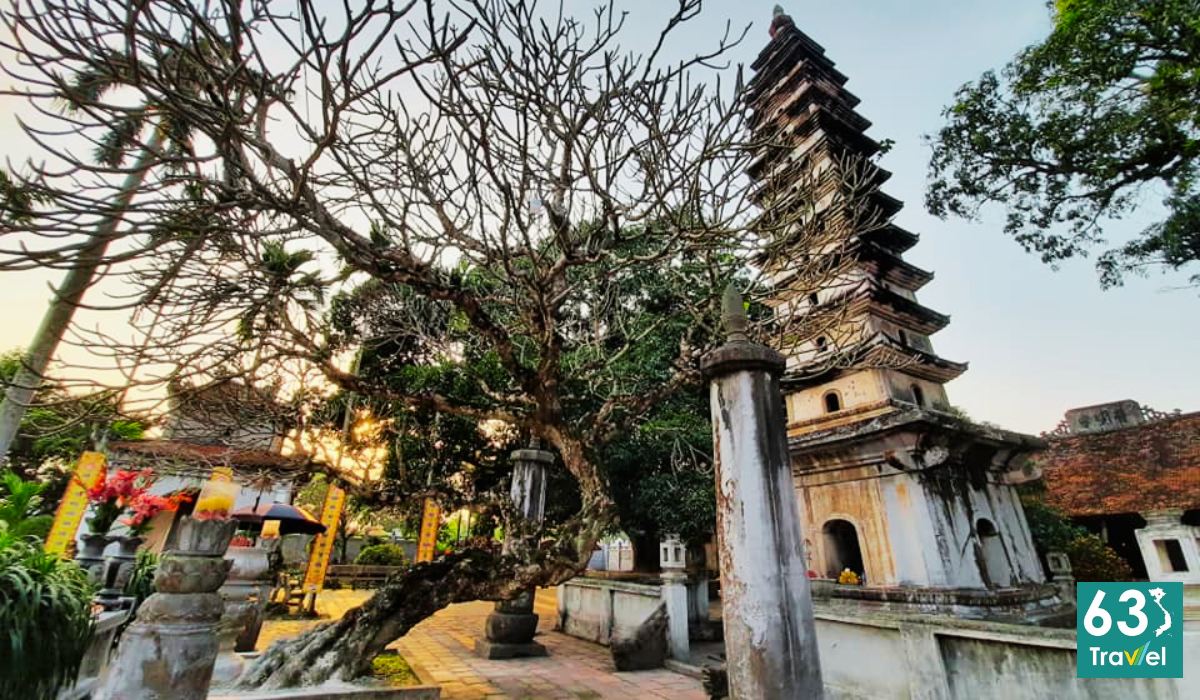
Pho Minh Pagoda - Beautiful green 800 year old pagoda tower near Hanoi
The lower two floors of the tower are built from solid stone, carved with unique patterns of the Tran Dynasty. The upper floors are built of bricks, depicting dragons and the words "Hung - Long Nam Nien". The top of the tower is decorated with a lotus bud with bunched petals, symbolizing the resilient will of the Vietnamese people.
If you have the opportunity to come to Nam Dinh, don't forget to visit this 700-year-old Pho Minh tower. You will admire a proud architectural work of the nation and hear thrilling stories about the formation of the tower.
Nam Dinh flagpole
The next place I want to introduce is Nam Dinh Flagpole, a proud historical symbol. Located on To Hieu Street, Nam Dinh Flagpole (or flagpole) is one of four flagpoles built in the early Nguyen Dynasty. Along with Hue Citadel Flagpole (1807), Hanoi Flagpole (1812) and Bac Ninh Citadel Flagpole (1838), Nam Dinh Flagpole is a valuable historical witness.
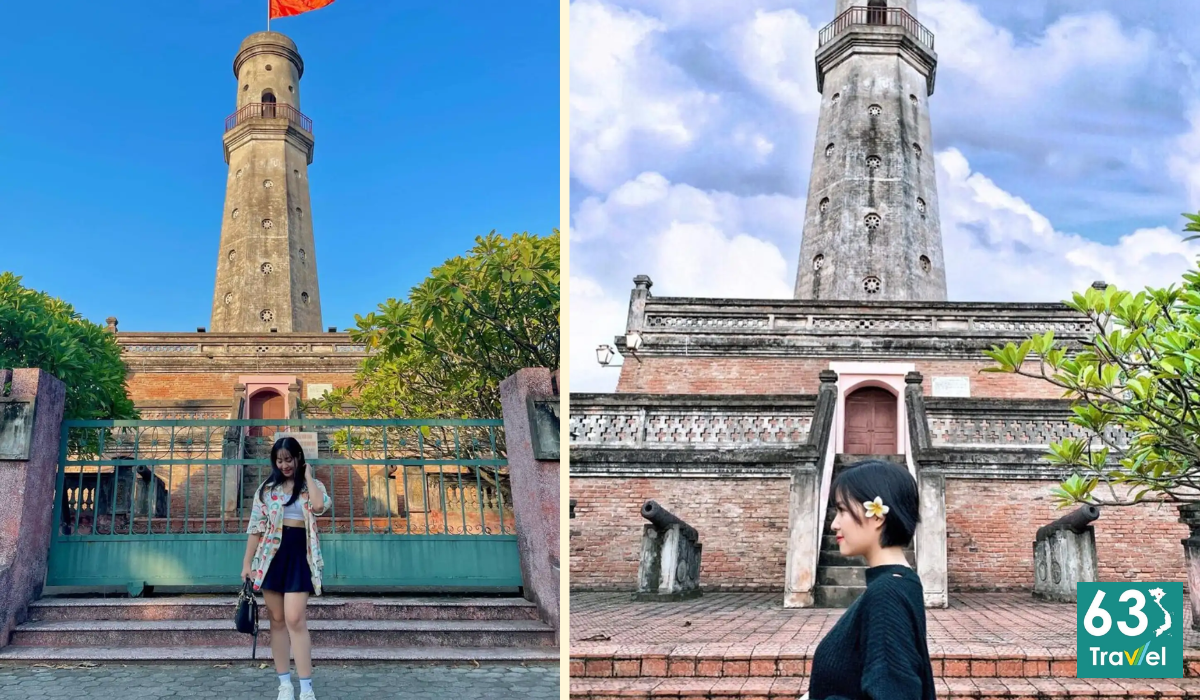
Nam Dinh flagpole - Ancient flagpole, the pride of Thanh Nam people
According to some documents, the Nam Dinh Flagpole was built at the same time as the Hanoi Flagpole and was completed in the year of the Cat (1843) with many additions at the top. This is an architectural work imbued with history and culture, a place you cannot miss when visiting Nam Dinh city.
Tran Nam Dinh Temple
The Tran Nam Dinh Temple relic area, built in 1695, is an important historical and cultural work, worshiping 14 Tran Dynasty kings, their families and meritorious mandarins. Every year, the temple organizes two major festivals: Tran Temple Festival from the 15th to 20th of the 8th lunar month and the Spring Opening Ceremony from the 14th to 15th of the first lunar month, attracting a large number of people and tourists from all over.
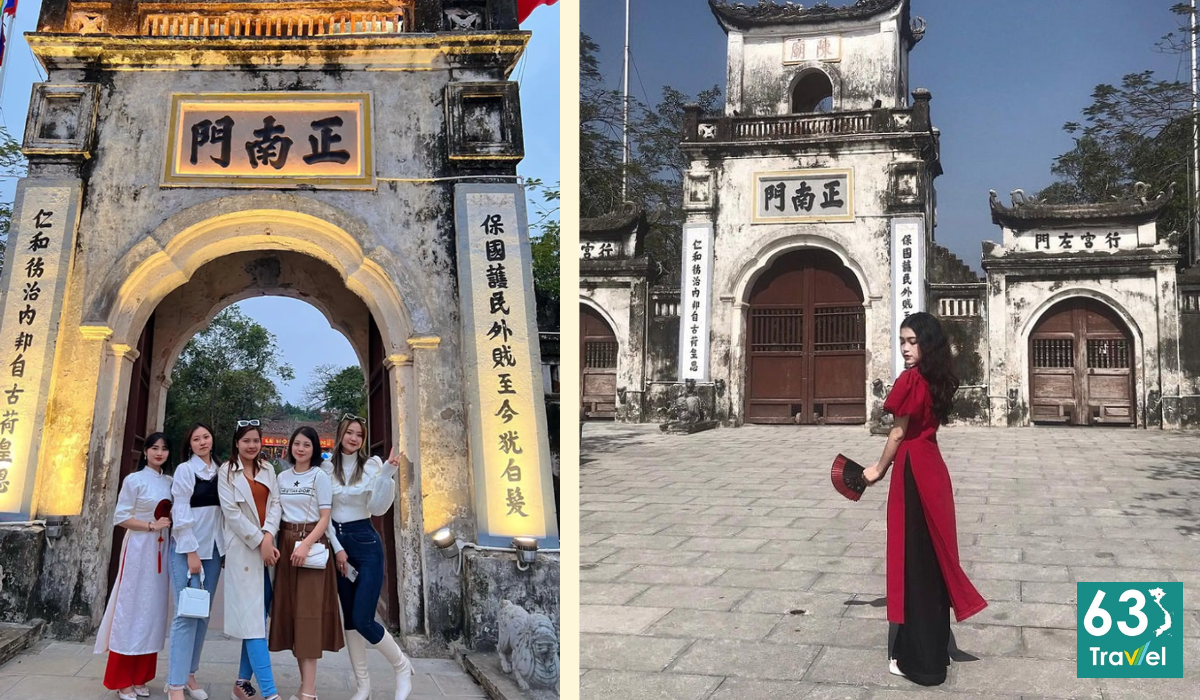
Go to Tran Nam Dinh temple to admire the sacred ancient temple architecture
This relic includes three main areas: Thien Truong temple, Co Trach temple and Trung Hoa temple. Thien Truong Temple is located in the center, where the altars of kings and officials of the Tran Dynasty are located. Co Trach Temple worships Tran Hung Dao and his family and generals.
Tran Nam Dinh Temple is a special national monument, not only a place of worship but also a historical symbol. Where visitors can learn about the Tran Dynasty and deeply feel the nation's cultural values.
Giap Ba Temple
Giap Ba Temple (also known as Cam Nang Temple) is located on a large, flat and high land in the center of Nam Giang town, 9km from Nam Dinh city along Provincial Road 490C. The project includes the main temple worshiping King Trieu Viet and two small temples worshiping two generals of the Doan family.
Giap Ba Temple in Nam Giang town is a place to worship Trieu Viet Vuong, a famous general who was instrumental in expelling the invaders of the Luong Dynasty, forcing them to humiliately retreat and establishing an independent and self-reliant dynasty for the nation. The temple also worships Doan Quan Cong and Doan Tuong Cong, local people who have made many contributions to their homeland.
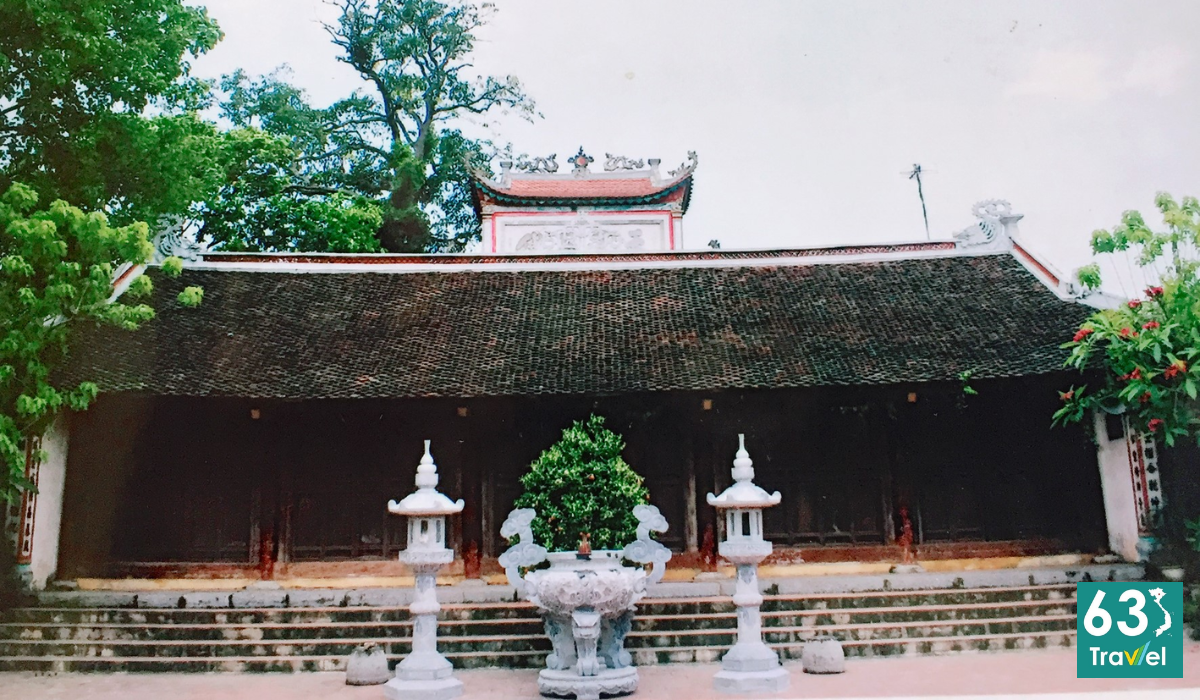
Preserving the 200-year historical value of Ba Giap Temple
The overall architecture of Giap Ba temple includes 10 buildings with 30 large and small compartments, designed in traditional style, including two curved roof buildings made in the style of the Later Le period. The temple also preserves many worship objects, ordinations, parallel sentences and dharma statues of high artistic value.
With unique historical, architectural and cultural values, Giap Ba Temple was ranked as a national historical-cultural relic in 1994.
Dai Bi Pagoda
Dai Bi Pagoda, located in Nam Truc, Nam Dinh, is an ancient pagoda built in the 10th century. With unique and beautiful architecture, the pagoda bears the Chan Dai Bi style.
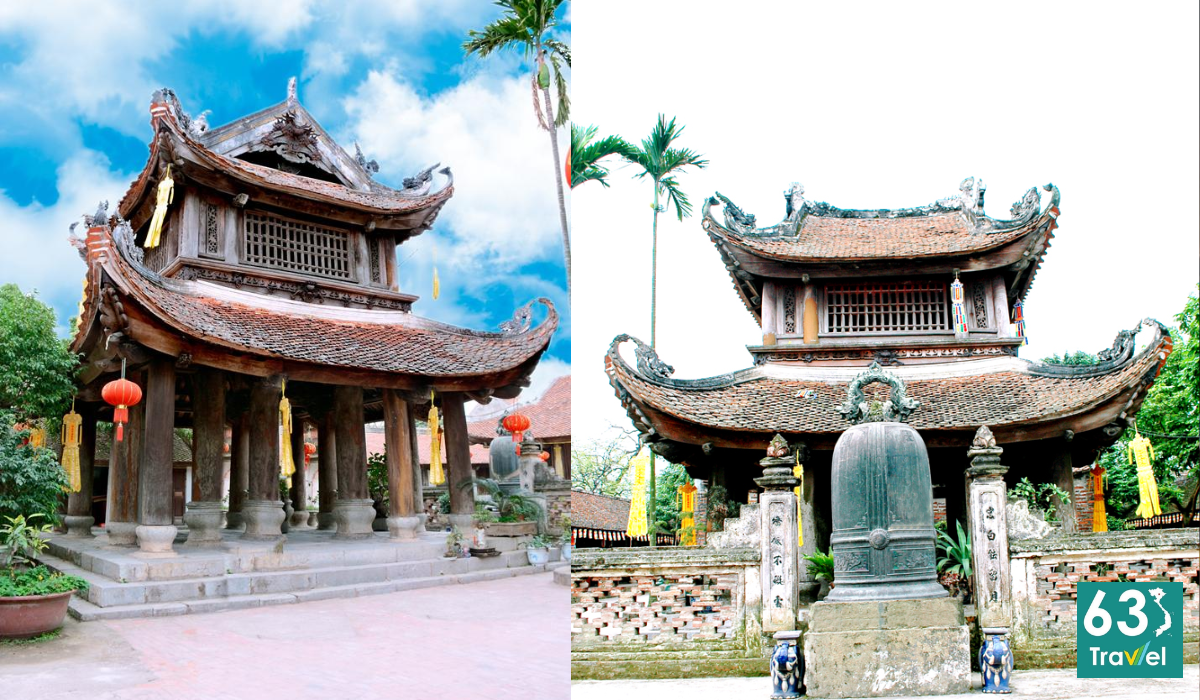
Admire the unique wooden architecture of the famous ancient Dai Bi Pagoda in Nam Dinh
This place stands out with the statue of Chan Dai Bi, a beautiful and largest stone sculpture in Vietnam, weighing more than 100 tons and about 11 meters high. Dai Bi Pagoda is not only a spiritual place but also an attractive destination for tourists when coming to Nam Truc, contributing to the cultural and historical beauty of this land.
>> Further reference: Collection of beautiful photos of Nam Dinh tourist destinations
Xuong Dien Church - Nam Dinh
The collapsed church and salt fields at Xuong Dien beach, Hai Ly, Hai Hau, Nam Dinh are an attractive destination with exotic beauty and rich history. Before 1996, this area used to be a bustling village with many large and beautiful churches. However, due to the sea encroaching deeply into the mainland, the village gradually disappeared, leaving behind destroyed but still mysterious architectural works.
The collapsed church, with its mottled walls and desolate landscape, along with the white salt fields, create a special scene, attracting tourists and those who love to explore history and nature.
Gin Temple
Gin Temple is an ancient temple built in the 10th century. With unique architecture combining Chinese and Champa styles, the temple stands out with ancient stone idols and crystal sculptures. cunning, becoming a historical, cultural and spiritual attraction that attracts many tourists.
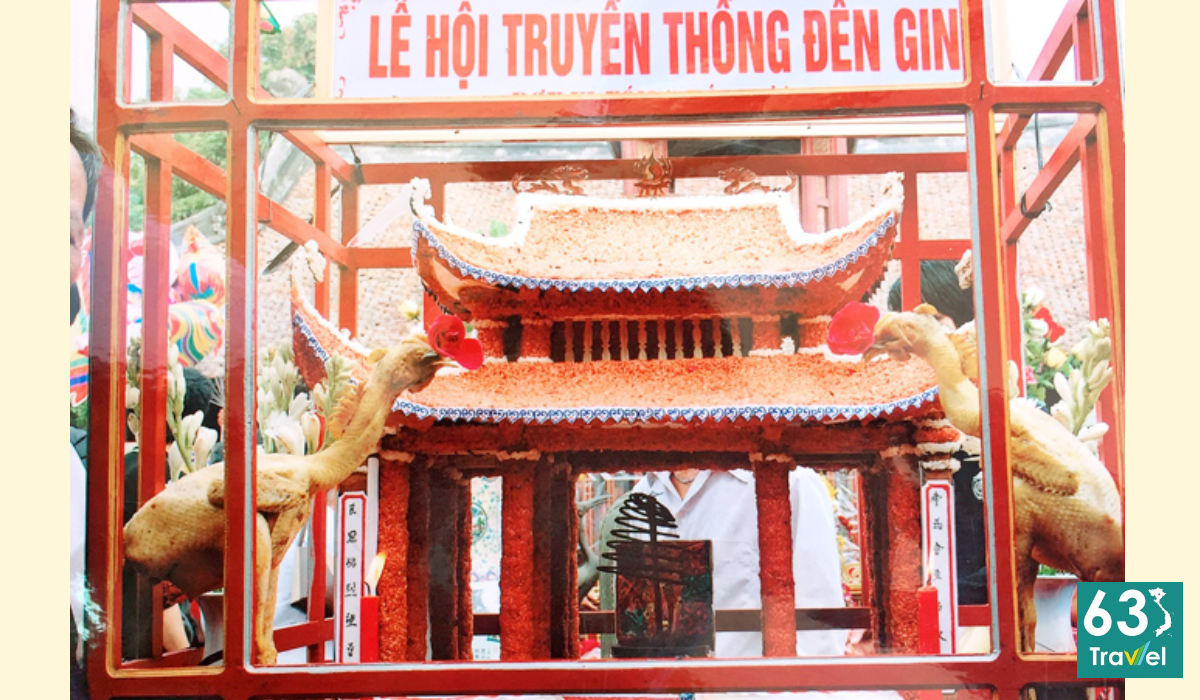
Gin Temple Cultural historical relic and traditional festival
The temple has been recognized as a National Monument, a place to worship and pay tribute to the Holy King Kieu Cong Han, who helped Ngo Quyen defeat the Nam Han invaders on the Bach Dang River. The layout of the temple is symmetrical and harmonious, including items such as temple wells, shrines, screens, ritual gates, outer courtyards, front chambers, inner courtyards, front halls, and forbidden palaces, located on the grounds. 3,290 square meters wide.
The architecture of Gin Temple reflects the art of the Later Le period, and this is also a place to store many valuable antiques such as miracles, ordinations, incense burners, thrones, tablets, worship statues and stone carvings, contributing to making so the special historical and cultural value of the temple.
Coc Thanh Church
Coc Thanh Cathedral stands out with its French-inspired architecture, ancient beauty and covered in moss over time. The cathedral exudes a peaceful space, creating an ideal destination for tourists to visit, attend ceremonies and pray for the peace of themselves and their families. The combination of exquisite architecture and solemn atmosphere makes Coc Thanh church an attractive and meaningful destination.
Nam Dinh Museum
Nam Dinh, known as the country of studious children, always leads in graduation and university exams nationwide. Nam Dinh Provincial Museum is a place to preserve and disseminate the value of nearly 20,000 documents and artifacts, vividly and comprehensively reflecting the natural and social history of the province.
With these efforts, the Provincial Museum has become a perfect cultural destination, fully meeting the standards of a provincial museum. In 2011, Nam Dinh Provincial Museum was ranked 2nd in the system of museums in Vietnam.
Hung Nghia Church
Hung Nghia Church was built in 1927 and is one of the most beautiful architectural works in Vietnam, bearing bold features of classical Spanish and French Golic architecture. This is a check-in point not to be missed by tourists when coming to Nam Dinh tourist area.
Seen from a distance, Hung Nghia church shines with mysterious beauty like an ancient castle in the West, with attractive gray tones and sophisticated architectural details. For those who love "virtual living", this is an ideal place to take unique artistic photos.
Am Temple
Am Temple is a place where local people respect and appreciate the merits of the Holy Patriarch, Zen Master Bui Hue To (1566 - 1641). The temple is located on a 2,685 square meter plot of land, facing southwest, surrounded by many perennial trees creating a cool and fresh space.
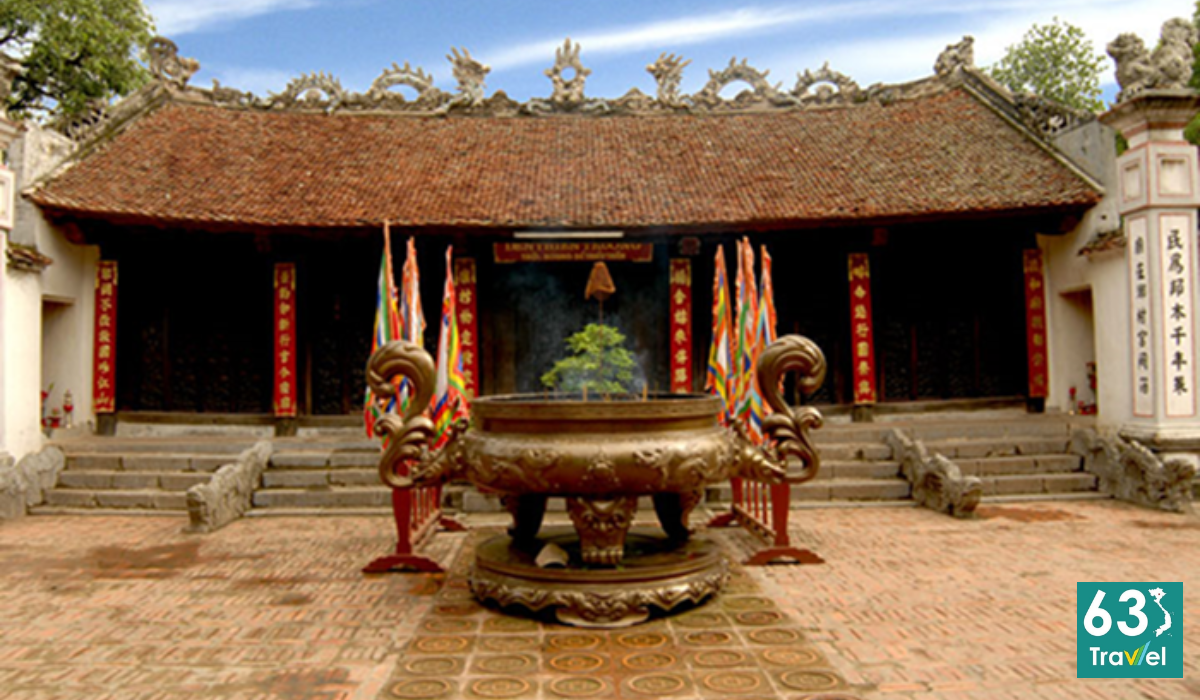
Visit Nam Dinh Am Temple - feel the beauty of Vietnam
The entire architecture of Am Temple is built according to an overall layout including the lake, gate, ritual gate, yard, guest house, and main buildings such as the main temple and two rows of internal courtyards. These works are arranged along a north-south axis.
The main temple has an architecture that reflects the style of the word "cong", including the front hall, middle hall and forbidden palace. The front hall consists of 3 rooms and 2 wings, with two porches in front of the door decorated with carved stone pillars and Chinese couplets praising the Zen Master's merits. The roof of the front hall is built in a flat curved roof style, using ironwood and male tiles. The decoration on the roof includes dragon motifs and tiger face motifs.
The middle street has arched architecture, built from brick columns and has 2 floors and 8 roofs. The ancient part of the middle hall is decorated with large characters and lengthy motifs such as water scrolls, phoenix jaw letters and tiger face motifs.
The forbidden palace is the most important worship area of Am Temple, with a layout of tablets and statues worshiping Zen Master Bui Hue To, the Holy Mother and the Holy Fathers. The inner courtyard is divided into 2 rows, each row consists of 4 rooms, built in a symmetrical style and is the living place of local residents.
Van Chang communal house is a historical and architectural relic, traditional art and blacksmithing
Van Chang communal house located in Van Chang village is an important historical and cultural relic of the locality. This is a place of worship and gratitude for the community's merits to the Six Patriarchs of blacksmithing, whose descendant names date back to 1344, including:
Pham Nguyet Immortal Master revered god.
Tu Cung Immortal Master revered god.
Tu Hau Immortal Master revered god.
Nguyen Nga Immortal master revered god.
Nguyen Than Tien, revered master.
Do Bao Immortal Master revered god.
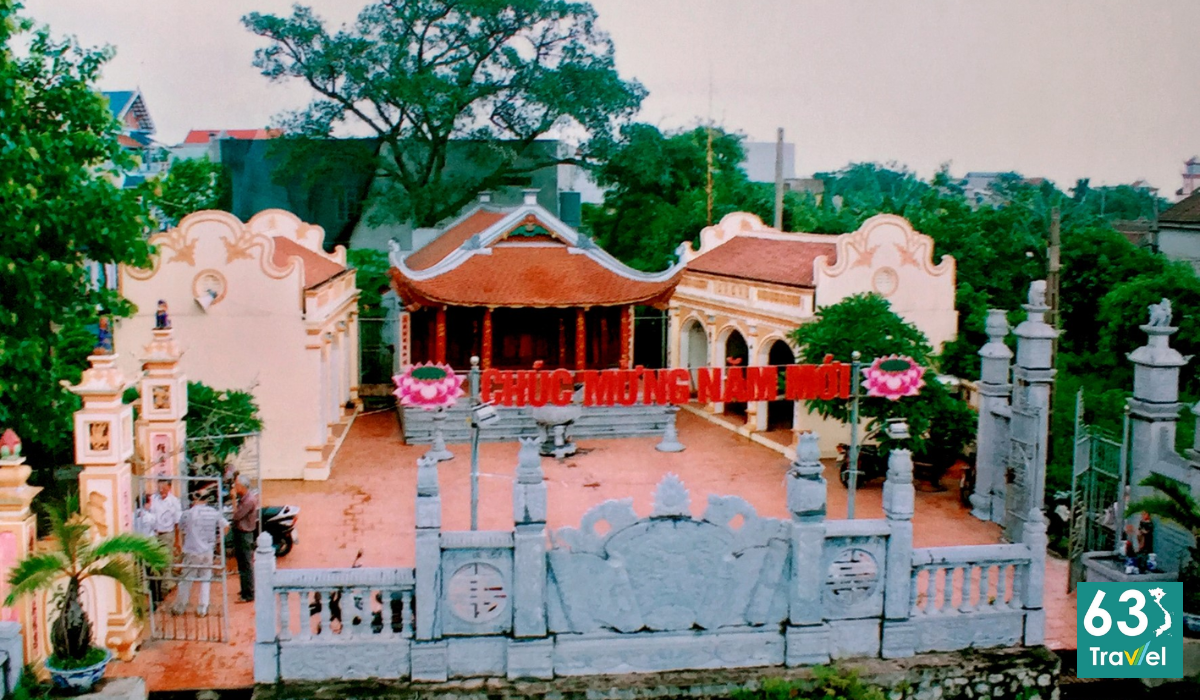
Van Chang communal house is a historical and architectural relic, traditional art and blacksmithing
Blacksmithing in Van Chang has gradually developed and become a traditional handicraft, making an important contribution to local specialized production. Van Chang communal house was built at the end of the 14th century with a scale and architectural style imbued with traditional features, combined with classical carvings.
Here, there are still preserved many valuable relics and antiques such as 6 decrees conferred with the title Khai Dinh 9 (1924), affirming the merits of 6 profession ancestors; Forging tools from the Le Dynasty such as wooden forge bellows, cannon pipes, table knives and curved spears.
In addition, the location also preserves many folk cultural activities, especially traditional festivals held on the 15th day of the 12th lunar month every year, with a large festival every 2 years in even-numbered years. Van Chang communal house was ranked as a provincial-level relic by the People's Committee of Nam Dinh province in 2017 and ranked as a national-level relic by the Ministry of Culture, Sports and Tourism in 2018.
Bao Loc Temple
Bao Loc Temple is located about 5km from Nam Dinh city, built on the site of the former hamlet of An Sinh Vuong Tran Lieu, father of Hung Dao Vuong Tran Quoc Tuan. This is one of the sacred places that attracts visitors from all over to visit and attend the festival on the 20th day of the 8th lunar month every year, commemorating and honoring the merits of Tran Hung Dao. This festival is an important occasion for history and culture lovers to have the opportunity to explore and learn about the cultural heritage of this land.
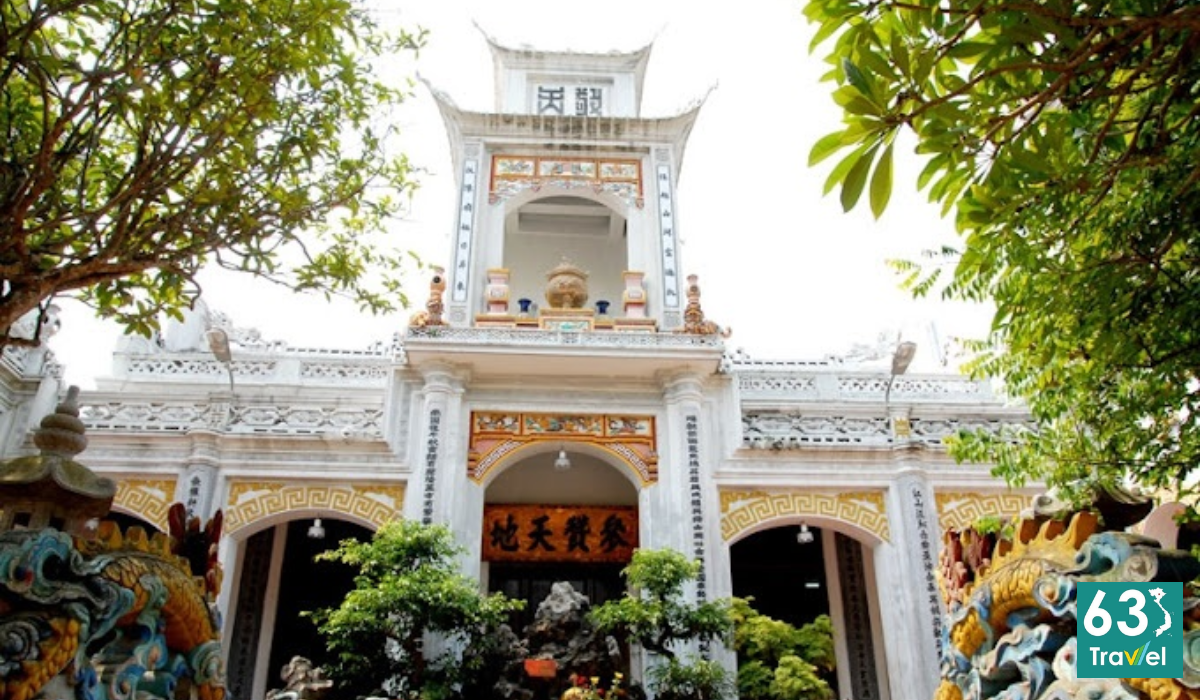
Bao Loc Temple - the sacred temple of Saint Tran's hometown
Phu Nhai Basilica
Nam Dinh, for many people who follow the diocese, is a land imbued with a strong religious identity. If you have the opportunity to visit this city, don't forget to stop by Phu Nhai Church. Known as Phu Nhai Holy Temple, also known as Phu Nhai Church, the Basilica of the Immaculate Conception is located in Xuan Phuong commune, Xuan Truong district, Nam Dinh province, just over 1 km from Xuan Truong town. This is one of the churches with the largest area in Vietnam.
Temple of the Great Saint (Vinh Lai Temple)
Vinh Lai Temple is a famous tourist attraction. This is the place to worship two generals under the Trung Sisters, Bach Dang and Cao Loi. Vinh Lai pagoda area is an admirable work of art with many delicate embossed patterns such as leaves, clouds, chrysanthemums, lemon flowers, lilies, flower leaves and mother dragon with her children. The bronze bell cast in the 23rd year of King Tu Duc's reign (1870) is also one of the temple's notable features.
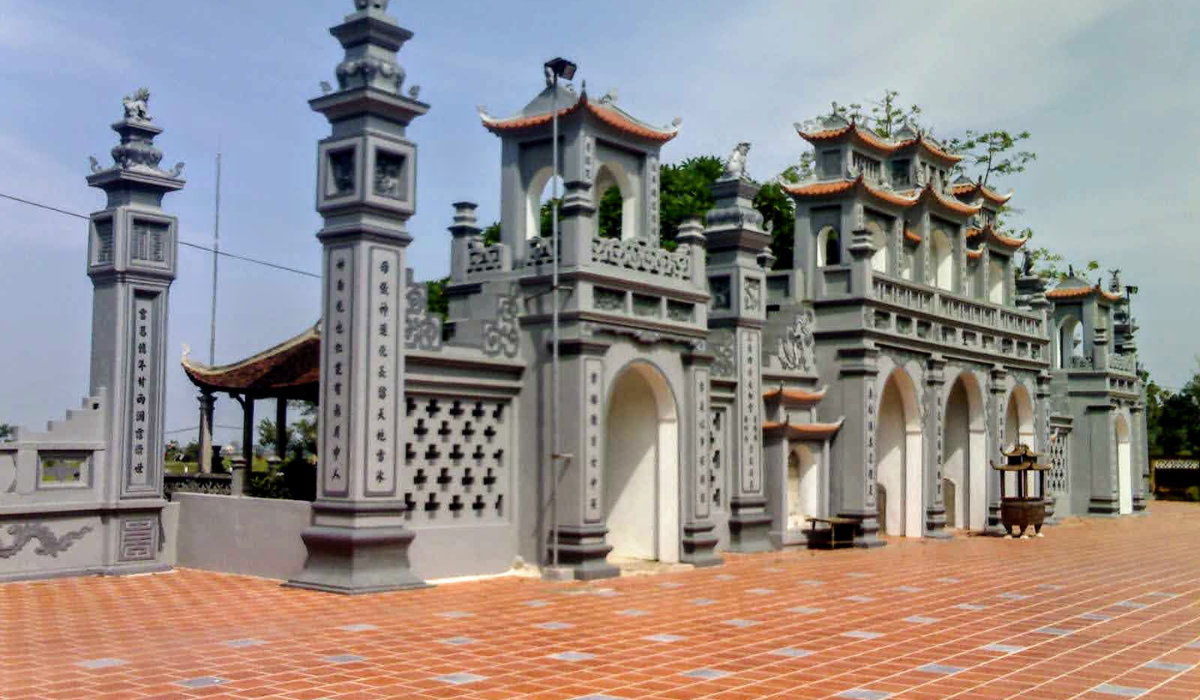
Vinh Lai Temple - Thanh Nam historical relic and scenic spot
Nam Ha Stone Temple
Stone Temple (also known as Stone Communal House) is an architectural temple built entirely of stone in the architectural style of the Later Le Dynasty. The project includes 4 main buildings and a dance floor in the north. The worship hall, built in the early 19th century, is the focal point of the temple with architecture entirely made of stone. The railing of the altar is carved with three majestic and graceful dragons, in the posture of flanking three Chinese characters, adding dignity to this monument.
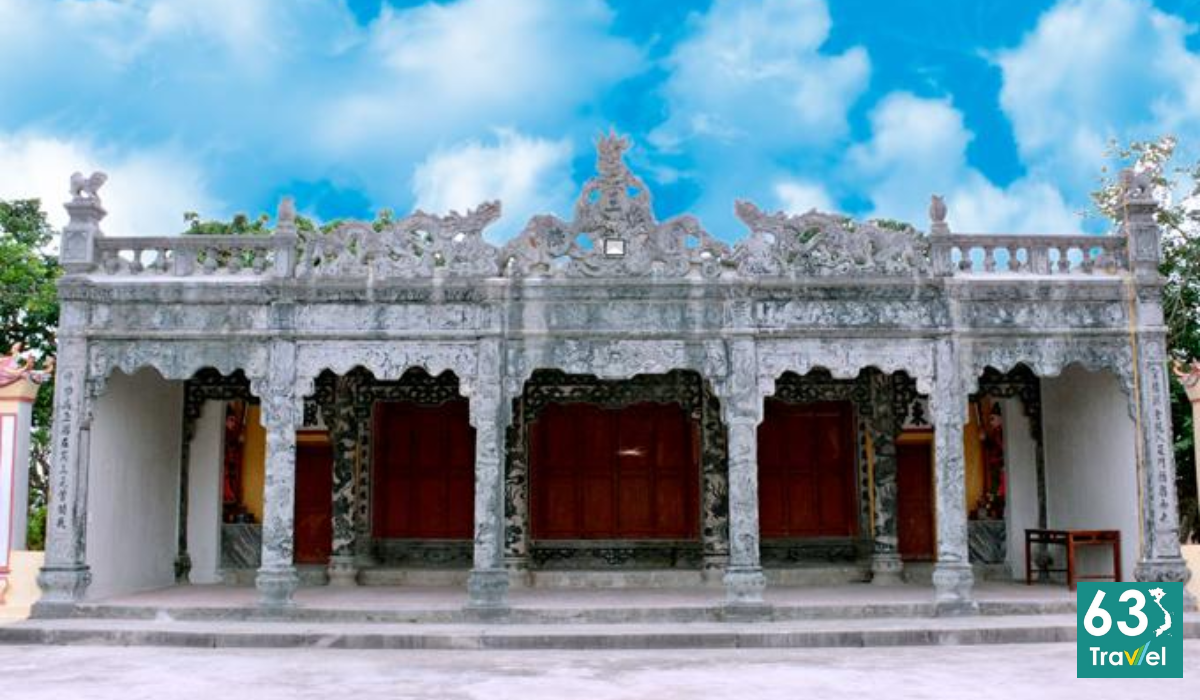
Nam Ha Stone Temple - Historical architectural and artistic relic
The eight stone pillars at Da Temple are decorated with embossed reliefs, depicting dragons flying among soft clouds, imbued with the artistic style of the Later Le period. Inside the worship hall are the second and third buildings.
The third court has 5 rooms and was renovated in 1877, while the second building also has 5 rooms and was restored in the 4th year of King Thanh Thai's reign (1892). Both buildings retain many features of traditional architecture, especially the embossed ironwood doors with motifs of two dragons and dragons, creating flexibility and sophistication.
>> Should read: Famous beautiful churches in Nam Dinh shine brightly before Christmas Eve
Textile Museum - Nam Dinh
This is one of the precious cultural heritages of the textile industry, outstanding with its classic architecture and important role in the history of local production labor. Located at Nam Dinh Textile Factory, the house bears the mark of French architecture, and has been the largest production center in Vietnam since 1889. With more than 6,000 workers, the factory has contributed significantly to the strong development. strength of this industry.
The Museum's area is up to nearly 1.2 hectares, divided into many display spaces imbued with cultural identity. Here, visitors have the opportunity to explore ancient Vietnamese fabrics and costumes, along with textile machinery and tools that have made this industry glorious for many centuries.
Tran Hung Dao monument
Tran Hung Dao Monument, one of Nam Dinh's famous attractions, rises on 3/2 Square (Nam Dinh City), near Vy Xuyen Lake. Cast from pure bronze, the statue is about 10.22 meters high and weighs about 21 tons, placed on a 6.5 meter high pedestal.
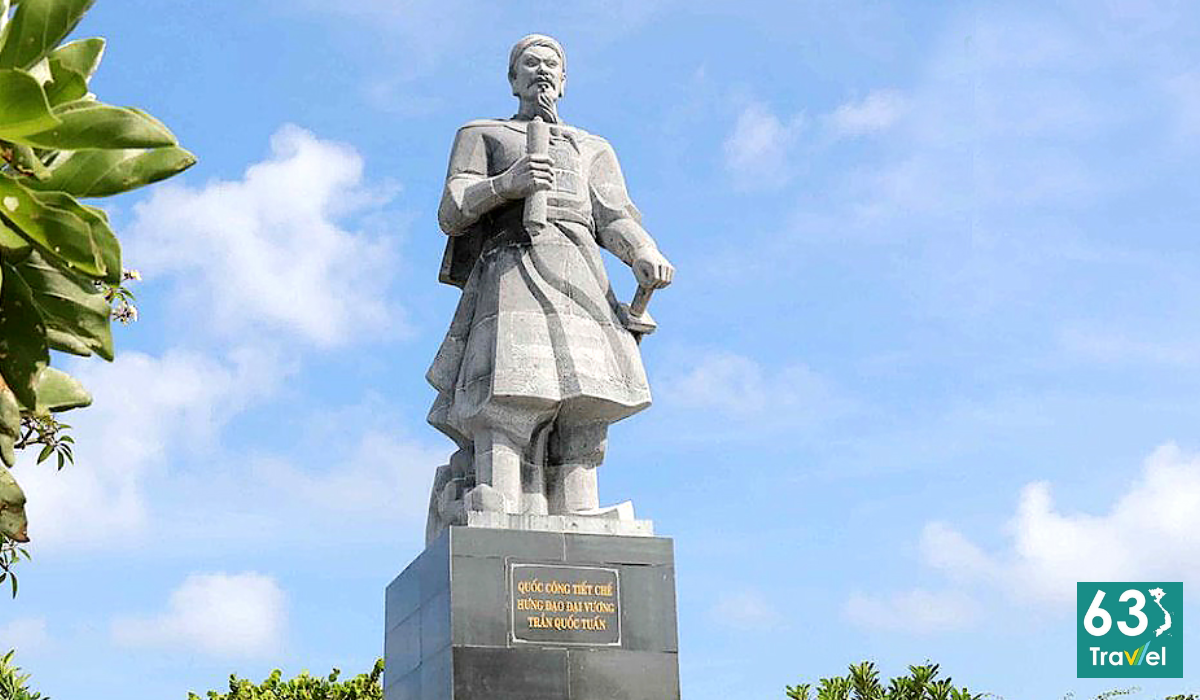
Tran Hung Dao Monument - a spiritual cultural work of the Thanh Nam people
To create this monument, the artist had to cast 9 blocks (each block weighs from 1.8 to 2.8 tons), creating a monumental work not only in scale but also in precious materials and form. shows deep respect for national hero Tran Hung Dao and respect for Nam Dinh's historical roots.
Above is a list of 15+ historical relics in Nam Dinh that many people come to explore. If you have a trip here, you should not miss the list above! Surely, when you come here you will be attracted and experience interesting things here. Wishing you an exciting trip!
Ninh Binh 16536 view
Update day : 12/07/2024